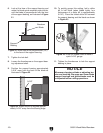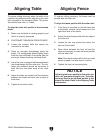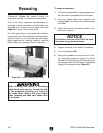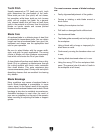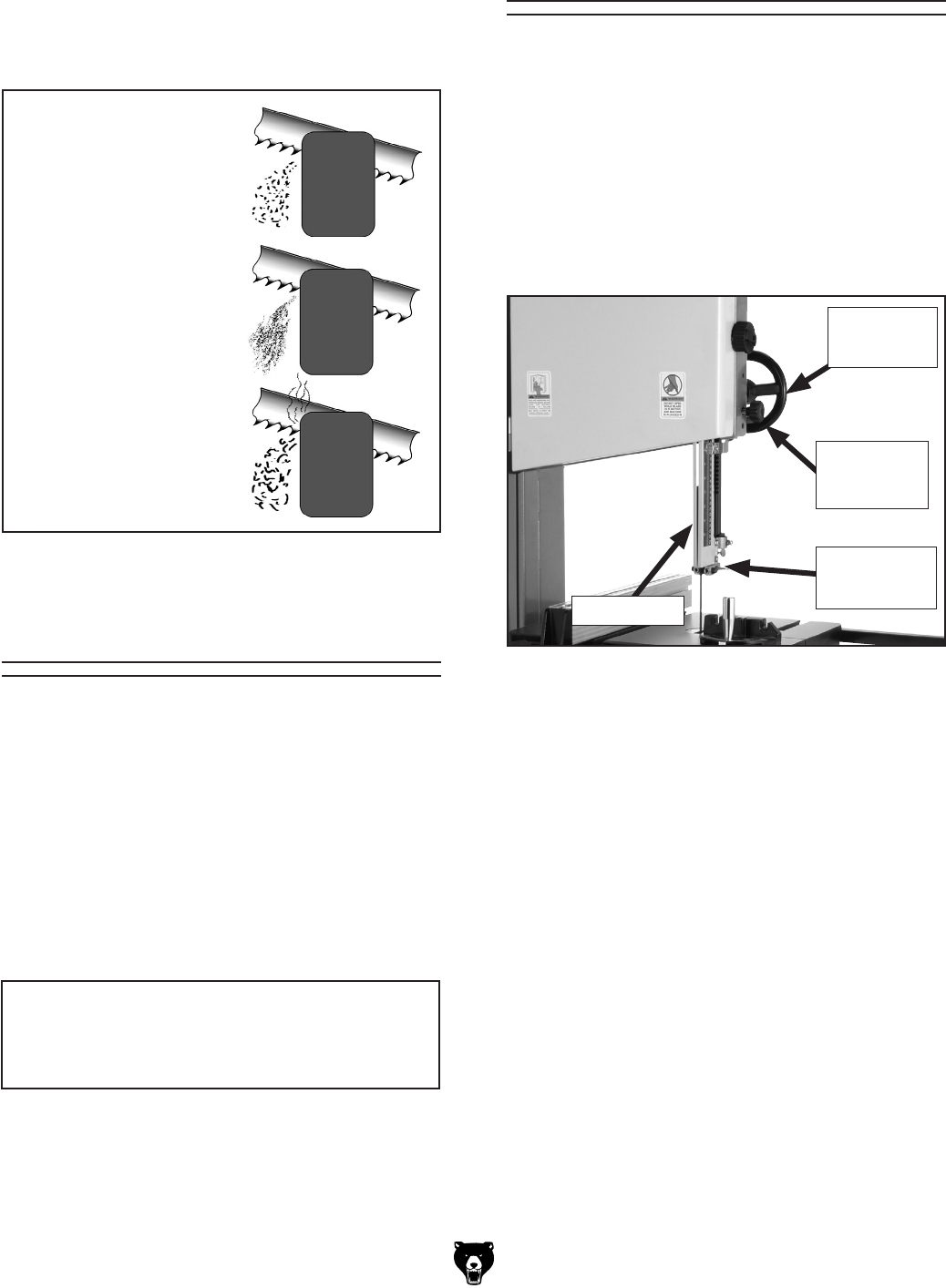
-26-
G0621 Wood/Metal Bandsaw
• When cutting metal, pay attention to the char-
acteristics of the chips when cutting—they
are good indicators of proper blade speed
and feed rate.
Figure 30 shows the basic
chip characteristics and what they mean.
To adjust the blade guide assembly on the
guide post (the bandsaw must be turned
OFF):
1. Make sure that the blade tension, blade
tracking, support bearing, and blade guides
are adjusted correctly.
2. Loosen the guide post lock knob shown in
Figure 31.
3. Raise/lower the guide post so the bottom of
the blade guide assembly is less than 1" from
the top of the workpiece.
4. Lock the guide post with the lock knob.
The guide post (shown in Figure 31) connects
the upper blade guide assembly to the bandsaw.
The guidepost allows the blade guide assembly to
move up or down to be as close to the workpiece
as possible. In order to cut accurately and safely,
the bottom of the blade guide assembly must be
no more than 1" from the workpiece at all times—
this positioning provides the greatest blade sup
-
port and minimizes the amount of moving blade
exposed to the operator.
Figure 31. Guide post controls.
Guide Post
Guide Post
Lock Knob
Guide Post
NOTICE
The positive stop must be removed to move
the table to the left.
The bandsaw table tilts from -5˚ left to 45˚ right.
To tilt the table:
1. Loosen the two trunnion knobs underneath
the table.
2. Tilt the table to the desired angle. (Refer to
the angle gauge on the front table trunnion.)
3. Retighten both table-tunnion knobs.
Table Tilt
Guide Post
Handwheel
Figure 30. Reading chip characteristics.
Chips are
silvery,
thin, small, or
powdery: Increase
feed rate.
Chips are large,
curled, blue or
brown, or smoking:
Decrease feed rate.
Chips are width of
tooth, thin, curled,
and silvery
:
Optimum speed and
feed rate.
Blade Guide
Assembly





